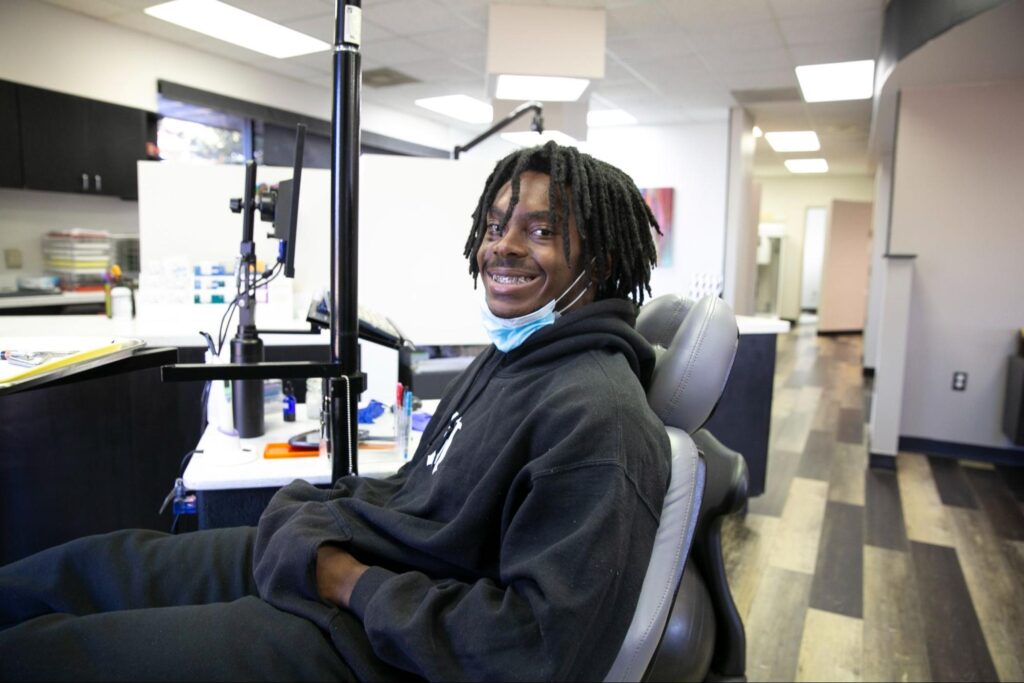If you’re considering braces or Invisalign, chances are you’ve already wondered, “How does my insurance actually work for this?” You’re not alone—insurance can feel complicated and frustrating at times. Our team at Farrow & Dewbre Orthodontics wants to make things as easy as possible for you.
With convenient offices in Oklahoma City, Edmond, or Clinton, Dr. Farrow and Dr. Dewbre are here to help you understand what your insurance covers, what it doesn’t, and how to make the most of your benefits. Let’s break it all down so you can walk into your consultation feeling prepared.
What Does Orthodontic Insurance Cover?
First, it’s important to know that just because you have dental insurance doesn’t mean orthodontic treatment is automatically included. Many plans don’t cover braces or aligners unless you’ve added orthodontic coverage. Even then, coverage can vary widely. Here’s what orthodontic insurance typically covers:
- Braces or Invisalign: The cost of these treatments is often covered up to a percentage, such as 50%.
- Lifetime Maximums: Most plans have a cap on how much they’ll pay, often ranging between $1,500 and $3,000.
- Exclusions or Waiting Periods: Some plans won’t cover treatment already in progress or may require you to wait a certain amount of time before benefits kick in.
If you’re unsure about your coverage, take a few minutes to call your insurance provider or check your benefits summary. Knowing the details upfront can save you from unexpected bills later.
How to Maximize Your Orthodontic Benefits
Getting the most out of your insurance doesn’t require an advanced degree—just a little planning and some good questions. Here’s how you can stretch those benefits:
- Start Early: If you know orthodontic treatment is on the horizon, make sure your plan includes coverage well in advance. Many plans have a waiting period of six months to a year before benefits apply.
- Understand Your Lifetime Maximum: Once you hit this limit, your insurance won’t cover anything beyond it. Be aware of how much room you have left under that cap.
- Use Pre-Tax Accounts: Flexible Spending Accounts (FSA) and Health Savings Accounts (HSA) let you pay for medical expenses, including orthodontics, with pre-tax dollars.
Proactive planning can make a big difference when it comes to out-of-pocket costs.
Can Two Insurance Plans Save You More?
If you have two dental insurance plans—maybe through your employer and a spouse’s plan—you might assume double coverage equals double savings. But that’s not exactly how it works. Here’s how dual coverage usually plays out:
Plan A: Your primary insurance covers a portion of your treatment (say 50%).
Plan B: Your secondary insurance fills in some of the gaps left by Plan A, but it doesn’t stack on top to cover 100%.
For example, let’s say your braces cost $6,000. Plan A covers 50% after a $1,000 deductible, leaving $2,500 for you to pay. Plan B might then cover 30% of that remaining amount after its own deductible. So while you’ll still have out-of-pocket costs, having two plans can reduce them significantly.
Common Insurance Models
Not all orthodontic insurance plans work the same way, and understanding yours can help you avoid surprises. Here are three common coverage models:
Percentage Coverage with a Lifetime Maximum
Your plan might cover 50% of your treatment costs, but only up to a cap, like $2,000. Once you hit that limit, you’re responsible for the rest.
Fixed Co-Pay Plans
These plans charge a set co-pay, and the insurance covers the remaining costs. For instance, you might pay $1,500 for a $5,000 treatment, and your insurance takes care of the rest.
Tiered Coverage
Some plans cover different percentages for various stages of treatment, such as 60% for braces and 40% for adjustments.
Let Us Help You Figure Out the Best Next Step For Your Orthodontic Care
Farrow & Dewbre Orthodontics can work with you to make sure you understand your benefits and get the most out of your coverage.
With offices in Oklahoma City, Edmond, and Clinton, Dr. Farrow and Dr. Dewbre are ready to help you start your orthodontic journey on the right foot. Schedule a consultation today.


